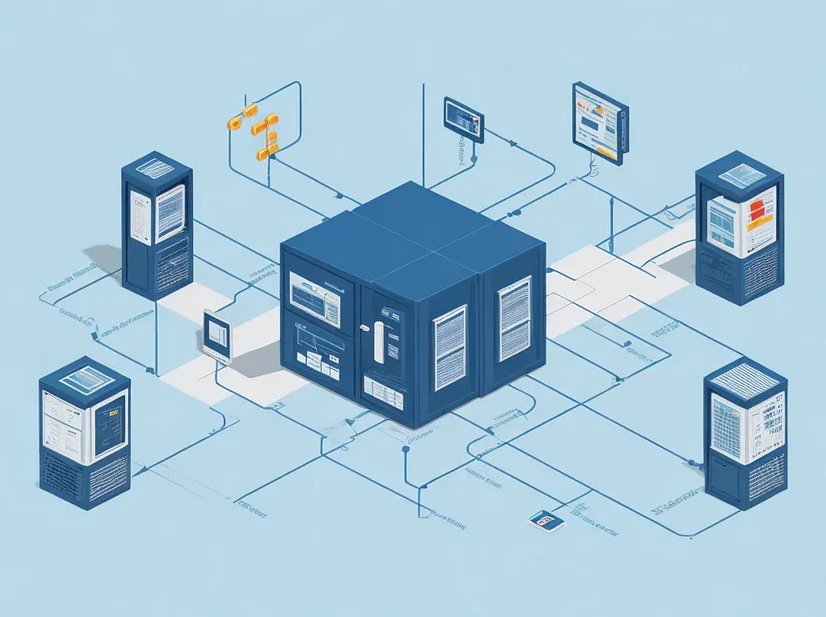Microservices architectures are becoming increasingly popular for building scalable and maintainable applications. One of the key challenges in this architecture is ensuring reliable communication between services. The “Outbox Pattern” is a design pattern that addresses this challenge by providing a way to reliably publish events from one microservice to another. In this article, we’ll explore the Outbox Pattern, its benefits, drawbacks and how to implement it.
Understanding the Outbox?Pattern
In a microservices architecture, services need to communicate with each other to share information and trigger actions. One common way to achieve this communication is through the use of events. When an event occurs in one service, it can publish an event to notify other services about the change. Subscribing services can then react to these events as needed.
However, ensuring the reliable delivery of these events to other services can be challenging. Network issues, service failures, and other transient failures can result in lost events or duplicate processing. The Outbox Pattern provides a solution to this problem by using a combination of techniques to guarantee the delivery of events.
How the Outbox Pattern?Works
The Outbox Pattern involves the following components and steps:
- Event Log (Outbox): Each microservice maintains an event log or outbox. When an event needs to be published, it is first recorded in the local event log. This ensures that the event is never lost.
- Transactional Database Operation: When an event is added to the event log, it is done within the same transaction as the business operation that triggered it. This ensures that the event is only recorded if the business operation is successful.
- Outbox Processor: An outbox processor is responsible for periodically scanning the event log, picking up unprocessed events, and publishing them to the message broker or the event bus. The outbox processor can run as a separate background task.
- Message Broker or Event Bus: The published events are sent to a message broker or event bus, which is responsible for distributing the events to the subscribers (other microservices). The message broker typically provides durability and reliability guarantees.
Benefits of the Outbox?Pattern
The Outbox Pattern offers several benefits for event-driven microservices:
- Reliability: By ensuring that events are recorded in the outbox within the same transaction as the business operation, you guarantee that events are never lost, even if the service fails temporarily.
- Atomicity: The pattern provides atomicity between the business operation and the event publication. Either both the business operation and event publication succeed, or neither does.
- Decoupling: Services are decoupled from each other as they don’t need to directly invoke each other’s APIs. They communicate via events, promoting loose coupling.
- Scalability: Services can independently scale and process events at their own pace, making the architecture more scalable.
Drawbacks of the Outbox?Pattern
Here are some of the drawbacks and challenges of the Outbox Pattern:
- Complexity: Implementing the Outbox Pattern adds complexity to your microservices architecture. You need to manage the event log, the outbox processor, and ensure that events are correctly recorded and published. This complexity can make your application harder to maintain and troubleshoot.
- Latency: The Outbox Pattern introduces latency between the time an event occurs and the time it is actually published to other services. Events are typically published by the outbox processor in batches at predefined intervals. This latency may not be suitable for scenarios that require real-time or low-latency communication.
- Scalability Challenges: While the Outbox Pattern promotes loose coupling and independent scalability of microservices, it can also introduce scalability challenges. If the outbox processor becomes a bottleneck or if the volume of events is extremely high, you may need to scale the outbox processing infrastructure.
- Storage Costs: Maintaining an event log in each microservice can lead to increased storage costs, especially when dealing with a large number of events. It’s important to manage the size of the event log and consider storage optimization strategies.
- Message Ordering: The Outbox Pattern does not guarantee the ordering of events when they are consumed by other services. Events may be delivered out of order, and you must design your services to handle this scenario, which can be complex for certain use cases.
- Failure Handling: While the pattern guarantees that events are not lost, it does not provide built-in mechanisms for handling event processing failures in subscribing services. Subscribers need to be designed to handle duplicate events, idempotency, and failure recovery.
- Outbox Processor Failures: The outbox processor itself can fail or experience issues. It needs to be designed with resiliency in mind and should provide mechanisms for error handling, retries, and monitoring.
- Operational Overhead: Managing the outbox processor and ensuring its correct operation can add operational overhead. It requires monitoring, maintenance, and potential troubleshooting.
- Data Consistency: The Outbox Pattern relies on the underlying data store for consistency. If there are issues with the data store, it can impact the reliability of event publication.
- Compatibility: Implementing the Outbox Pattern may require changes to existing microservices, making it potentially challenging to retrofit into an existing architecture.
- Message Broker Dependencies: The pattern relies on a message broker or event bus for reliable message delivery. Any issues with the message broker can impact the reliability of the event publication.
Conclusion
While The Outbox Pattern is a valuable design pattern for ensuring reliable event publishing in microservices architectures. It provides a way to decouple services, guarantee event delivery, and maintain atomicity between business operations and event publication. By implementing the Outbox Pattern, you can enhance the robustness and scalability of your microservices-based applications. It is not without its drawbacks and challenges. Understanding these limitations is important when considering the pattern for your application.
